Sharlyn J. Lauby's Blog, page 102
March 5, 2019
Employee Turnover: Solve It Using 4 Levels of Analytics
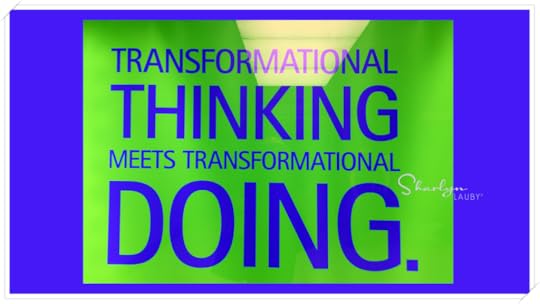
Every organization has a problem they want to solve. It could be a small problem or a large one. The key to solving problems is:
Gathering the right informationHaving a good approach
Often, organizations approach problem solving from the standpoint of “Oh, I know what the problem is…” and ultimately, they end up only addressing a symptom and not the real issue. I’m sure you’ve seen it too. In thinking about analytics, I could see how using the four levels of analytics could be a good approach for problem solving.
Here’s an overview of the four analytics levels and how it could be applied to address a challenge many organizations face: employee turnover.
DESCRIPTIVE analytics is focused on what’s happened. The first step in solving most problems is figuring out what’s going on. That’s descriptive analytics. The organization wants to collect information and data on the who, what, when, and where. The good news is with technology, you might be able to gather this information easily.
An example might be reviewing exit interview data to see if there are any trends for why employees are leaving, when they tender their resignation, and what positions / departments the employees work in.
DIAGNOSTIC analytics answer the question “why did it happen?”. Using the information from step one (descriptive analytics), the organization might be able to reach some conclusions about the situation. A technology solution might provide some assistance is filtering the data in different ways to explore new causes and correlations.
For instance, the organization might discover that managers tend to resign in March or April (right after they receive their annual bonus). Or a large number of new hires are leaving the accounting department within their introductory period. (Not making any judgements about accounting departments here. It’s just an example.)
PREDICTIVE analytics is about what will happen. I like to think of this step as “How will the situation play out?” Meaning if the contributing factors don’t change, what will the situation look like. Or if only one factor is changed how will that impact the outcome.
Companies can’t and probably don’t want to make lots of changes at one time. They want to implement change in a logical manner and use their resources wisely. It also helps individuals accept and embrace change.
PRESCRIPTIVE analytics points toward “What should we do?”. In the predictive analytics stage, the organization considers all of the options. In the prescriptive analytics phase, decisions are made.
Using our turnover and employee retention situation, the organization might decide to focus on stay interviews. Managers can ask a stay interview question during regular one-on-one meetings. HR might add a stay interview question to new hire onboarding check-ins and regular pulse surveys.
Organizations can use the principles of analytics to help them identify problems and brainstorm solutions using data as the driving factor. This is definitely one of those moments when we can put the power of technology to excellent use.
P.S. If you’re looking for more information about analytics, check out “Predictive Analytics for Human Resources”. I’m a big fan of Jac Fitz-enz and his work. You know that I recommend his book “How to Measure Human Resources Management” to everyone. His predictive analytics book is equally excellent.
Image captured by Sharlyn Lauby after speaking at the HR Change & Transformation Conference in London, England
The post Employee Turnover: Solve It Using 4 Levels of Analytics appeared first on hr bartender.






March 3, 2019
Turnover: Why Do Employees Leave in 2019 [POLL]

The latest Job Openings and Labor Turnover Survey (JOLTS) indicates that voluntary quits have surpassed pre- Great Recession levels. This turnover shouldn’t be a surprise. We’ve been talking about the shift to a candidate-driven market for quite some time.
What does surprise me are the reasons employees are leaving. On one hand, we have organizations reciting the old mantra, “People don’t leave jobs; they leave bad managers.” On another, I see articles like this one from the Society for Human Resource Management (SHRM) that says the majority of people leave for money.
Last year, we ran a turnover poll asking why employees start looking for a new job. It was in response to an article I ran across from Harvard Business Review titled “Why People Really Quit Their Jobs”. The HBR article is still an interesting read worth checking out. But it reminded me that the reasons employees leave can change over time.
So, I thought it might be worth asking the question again: What prompts employees to start looking for a new opportunity? Now, I realize this isn’t the same as the actual reason someone leaves. But if companies know the reason an employee starts looking, maybe they will proactively do something about it.
March 1, 2019
Celebrate Your Success – Friday Distraction
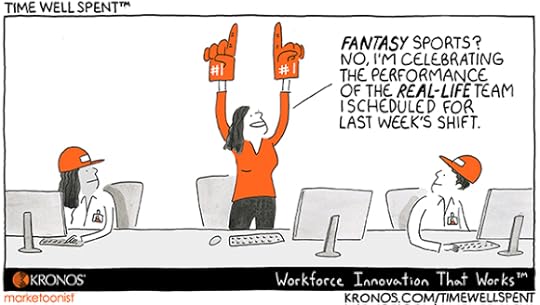
While Fantasy Football season is over, there are still plenty of other fantasy sports to go around. Fantasy basketball and soccer are in full gear. Fantasy baseball will be starting soon. But that’s not the point of today’s post.
Whether you play fantasy sports or not, it’s important to celebrate our success. I believe we remember to celebrate our big wins – like finishing a huge technology implementation or earning a professional certification. But this Time Well Spent from our friends at Kronos is a good reminder to celebrate the things we do every day … like scheduling.
One of the things I’ve learned from being self-employed and working at home is that celebrating doesn’t need to be big, elaborate, or expensive. Here are just a few of the ways I treat myself during the workday.
Listen to one of my favorite songs. Sometimes a celebration for me is taking 3-4 minutes, putting on the headphones, and listening to one of my favorite tunes and enjoy the success. Right now, I’m loving Queen’s greatest hits. Have dessert with lunch. I really, really try to eat healthy when I’m at home. Because it’s so hard to do when traveling. Occasionally, I will treat myself to dessert … in the middle of the workday! (I know…I’m quite a rebel. LOL!)Take a walk. I hear about lots of companies that have adopted “walking meetings”. Mr. Bartender and I do the same thing. This is not only fun and productive, but it’s great exercise.Play a game. I’ve recently become a fan of a word game called Wordscapes. It takes only minutes to play a round. I’m challenged to learn new words and it’s fun.
Of course, you don’t have to do any of these just because I like them. My point about celebrations is 1) find something that you like and 2) do it. We shouldn’t feel guilty about a little self-celebrating.
Work is hard. Not just the big stretch projects we take on, but there are small every day tasks that are hard. Don’t dismiss them as simply part of the job. Do them. Do them really well. And then celebrate your success.
How do you celebrate your successes? Leave a note in the comments. It would be great to try some new ideas!
The post Celebrate Your Success – Friday Distraction appeared first on hr bartender.






February 28, 2019
Encourage Employees to Keep Fit Even While Sitting at Their Desks

If you haven’t seen it, the Society for Human Resource Management (SHRM) recently put together an Express Request about the pros and cons of standing desks. It’s worth checking out. And the reason I say it’s worth checking out is because while the debate continues about standing desks, one thing is for certain, there’s some truth to the saying “sitting is the new smoking”. We need to find ways to be more active and keep fit at work.
As someone who works from home, I’m very empathetic with the balancing act that office workers face. Organizations want employees to be productive while they’re at work. And for many, that means sitting at a desk.
Cubii Allows Us to Keep Fit While Sitting
It’s one of the reasons I like my Cubii. Even though I’m sitting I can move and get some activity. If you’re not familiar with Cubii, I’ve written about them before. It’s a Bluetooth-enabled under the desk elliptical. But I will admit, that one thing I found missing with my Cubii was arm movements. Cubii realized this too, which is why they’ve created a new one-hour video on the Cubii YouTube channel with a certified fitness instructor that shows us how to get more of a total body workout when using a Cubii.
Now if you decide to watch the video (and I hope you will), you’ll notice that the way Cubii is stepping up our workouts is through the use of Theraband resistance bands. Cubii very graciously sent me a set loops in beginner, intermediate, and advanced levels to test drive and share with you. I must say, these aren’t your typical resistance bands – they have built in loops – which really helps me keep fit when doing activities!
But, back to the video. The video is broken into six sections and each section ranges from 3-8 minutes. There’s a warm up, cardio arm reaches, cardio feet, arm work with the Cubii bands, standing exercises with the Cubii bands, and lastly, cool down stretches. Just to be clear, this isn’t an intense sweaty cardio workout like you might see with some exercise bikes (you know which ones I’m talking about). These are small activities you can do throughout the day.
 Cubii Therabands
Cubii TherabandsIn fact, as I was testing the bands, I found myself doing the total body workout over the course of the day. Five minutes here and ten minutes there. Would it be better if I did an entire hour at once? Oh, I’m sure. But I think the point is some movement is better than no movement. And personally, I found developing a regular habit of small stretches and workouts throughout the day still provided a result of not feeling achy or tense. Your result may vary.
One word of warning as you’re watching the video. You’ll notice that the participants aren’t sitting behind a desk. I was initially a little concerned that I wouldn’t really get a good feel for the workout since I have my Cubii under my desk and I have an office chair with arms. While I wasn’t able to do all of the activities and work at the same time, I was able to do a lot of stretching, which can totally be done at my desk. In addition, I liked the constant reminders about posture, which makes my back feel happy.
Keeping Fit Involves Remembering
While I was watching the video and doing the exercises, I found myself saying, “You know, these activities aren’t difficult. I can totally do them to keep fit. And I feel good after doing them.” You know what my problem is? That I’m often so focused on my work that I forget.
So, I decided that not only do I need to add these extra activities into my workday, but I need to think of a couple of ways to create prompts or reminders. Here are a few things I’ve done.
I put my Cubii Therabands on my office doorknob. As I walk in, I grabbed a band, completed an activity, then started my work. I particularly enjoyed doing a quick set of bicep curls. And the punches! You can just image how great those feel when you’re having a particularly frustrating day…ha.ha.
I saved the video to my browser bookmarks. I have the internet open almost all day and saving it as a bookmark created a regular reminder that I need to watch it. A couple of times, I had the video playing (without the sound) as a reminder to do the activities. In case you’re wondering, I didn’t find it distracting to have the video playing without the sound.
I learned something new – desktop stickies! Whether you’re a Mac or a PC user, you can create a stickie for your desktop. It’s perfect for when you’re on a conference call or listening to a webinar. Get a couple of stretches in. Here is a picture of “My Office Workout” stickie. It’s not a long list, but this little bit of stretching makes me feel wonderful.
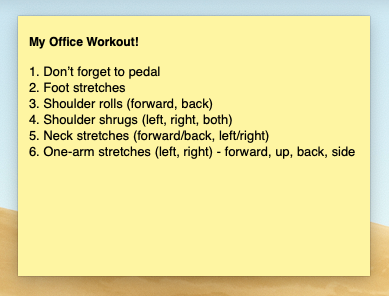 Desktop Sticky Office Workout
Desktop Sticky Office WorkoutSmall Activities Can Create Big Results
The U.S. Department of Health and Human Services (HHS) and the World Health Organization (WHO) have issued reports talking about the importance moving has on our health and well-being. I’m not a doctor but it does seem logical to me that small movements can lead to more overall activity. Especially, if you haven’t been exercising in a while.
Organizations realize that healthy employees are productive employees. A big part of being healthy is movement. But let’s face it, we can’t just take the day off and workout. We all have jobs to do. The idea of having an elliptical and a couple of resistance bands nearby is great – making the Cubii a well-rounded piece of exercise equipment. Now it’s up to each of us to look for moments in the workday to get some extra activity in.
Speaking of getting extra activity in, our friends at Cubii are giving away two Cubiis to HR Bartender readers. All you have to do is register on their website no later than Monday, April 1, 2019.
The post Encourage Employees to Keep Fit Even While Sitting at Their Desks appeared first on hr bartender.






February 26, 2019
Change Management: The First Step is Communication

I’ve been thinking about change a lot lately. Businesses change all the time. As individuals, we change too. Whether we’re talking about big or small changes, we’re always dealing with one at any given moment in time. On some level, goal setting and resolutions are about creating change.
But one thing I’m noticing about change is that people want it to happen without communicating all of the details on the front end. Here’s an example:
Employee: “I would love for my company to implement INSERT NEW PROGRAM HERE.”
Me: “Well, have you discussed it with anyone? What did they say?”
Employee: “Oh, I haven’t talked with them. They won’t listen to me.”
Now, I know you have the same response in your head as I do. “How can anyone listen if you don’t talk with them?!” The same holds true when managers ask a senior executive to sponsor or champion a project. We want the executive to support the initiative, but we don’t take the time to communicate their role.
I recently had the chance to attend the Society for Human Resource Management (SHRM) virtual seminar on “Change Management: Leading Successful Transformations”. The seminar was conducted by Todd Brodie, Ph.D., SHRM-SCP. Brodie did a nice job of taking what could be a very theoretical discussion about change management and sharing practical examples of how organizations can successfully implement change.
I’m not going to spoil the seminar for you (because you should take it) but one of my takeaways was in the area of communication. Specifically, communicating to project sponsors or champions how they can be most helpful. When it comes to project management, we remember to ask for support. But do we explain what that support looks like? Here are six things we should share:
Why the change is important and where it fits on the priority scale. The first part of this one makes complete sense. In asking for someone’s support, we want them to know the details of the change and why it matters. But let’s face it, this person is being asked to support other projects. In fact, it’s possible we’veasked them to support other projects. Every change initiative cannot be priority number one. Help the person understand where this project lies within all of the other things going on.How their support (or non-support) impacts the change. There’s a reason you’re asking this person to be the project sponsor or champion. Tell them the reason. It’s only fair. Maybe it’s because of their connection power. Or their expert power. Possibly it has to do with their information power. Whatever the reason, give the person an opportunity to decide they want to use their power for the proposed project. Otherwise, you could be disappointed later when you ask for them to use their power and they say “no”. What obstacles might be in the way and how they could help. A project sponsor might ask this, but if not, the topic should be addressed anyway. If you know that there are going to be some challenges along the way, tell the sponsor so they can start thinking about how they can help minimize the impact. Sometimes we don’t know problems until they happen, and everyone has to deal with the surprise. But occasionally, we can anticipate an obstacle and should address it on the front-end.The names of everyone else involved in the project. As much as we would love to say, “We’re all a team. Rah! Rah!” Office politics can often play a role in projects. It’s possible a person’s support of a project will rest on who is involved. Not only from a personality standpoint, but from a performance standpoint. A sponsor might say, “The only chance we have of this project succeeding is if Jose is on the team.” When you can reply, “I’ve already spoken with Jose and he’s onboard.” That could seal the deal. The required time commitment. We have a tendency not to think about this because project champions or sponsors aren’t a part of the project team. But it still involves time. Let the person know when their time will be required so they can decide if they have the time to give. It’s possible that they might ask to negotiate some time so they can support your project AND do other things. When they will receive updates about the project. The last thing you want to do is keep your project champion in the dark. They can’t help when they don’t know what’s going on. Find out how often they would like those updates as well as what format. If you’re asking them to help power the project, then be prepared to share information with them on their timetable in the format of their choosing.
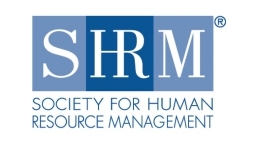
Projects and change go together like chocolate and peanut butter. (Sorry, I couldn’t resist the comparison.) And the fundamentals of project management tell us we need to have an effective project champion. The only way to make that happen is by clearly spelling out their role when we ask for their support.
P.S. If you’re not aware, SHRM offers seminars on a wide variety of topics as well as a certification prep course. Programs are held in cities all over the U.S. and virtually. For a complete list of program offerings, check out the SHRM Education website. Oh, and don’t forget seminars are pre-approved for professional development credits.
Society for Human Resource Management logo used with permission.
The post Change Management: The First Step is Communication appeared first on hr bartender.






February 24, 2019
Company Culture Needs to Get Employees Through the Hard Times

We spend a lot of time talking about the importance of creating a positive candidate experience so people will come to work for our companies. Then we talk about creating a positive employee experience, so individuals are engaged and productive. And we discuss the need for a positive company culture to retain employees.
All of these things are true. And we must do them all. But let’s be real, no matter what we do, every day will not be sunshine and roses. Sometimes organizations have tough days. They experience setbacks.
Last year, I had the privilege of hearing former President Barack Obama speak at the Association for Talent Development’s (ATD) International Conference and Expo.He said something that has stuck with me. I don’t remember the exact words, but it was about being there for people when times are good as well as when times are tough. In our organizations, do we think about the principles of our company culture when times are difficult? I know we consider the positive…
President Obama’s comment reminded me of how I arrived in human resources. I was involved in a major auto accidentthat put me out of work for almost a year. Some companies would have probably tried to figure out some way to get rid of me. And it would have probably been easy. This was pre- the Family and Medical Leave Act. But this organization kept me on the payroll, paid my medical insurance, and found me a new role (in HR) when I was ready to return.
Has your organization thought about what they feel is appropriate when:
An employee faces the death of a close friend or family memberThe organization experiences a safety issue or emergencyThe company discovers a major data security breach or hackingAn associate finds themselves without a home or transportation The company is considering a layoff or major restructuring
I’m not talking about what is commonplace in today’s business world. Or what is legally required. Does the company offer assistance that is aligned with their culture? For example, it seems like there would be a huge disconnect to say that the company is all about being an exceptional place to work but, when an employee loses a parent, they get the standard three days off for bereavement after submitting a copy of the obituary. You get the point.
Organizations are working on creating outstanding company cultures because it makes them competitive in today’s job market. They should absolutely continue doing that. But the way a company treats an employee who is facing some hard times will define the organization. I still remember to this day when I called my boss to tell him that my father passed. He said, “Don’t worry about a thing. Come back when you’re ready.” That was it. I was able to focus on my family.
Employees want to know that the organizations they work for will support them through good times and bad.
Image captured by Sharlyn Lauby while exploring the streets of Seattle, WA
The post Company Culture Needs to Get Employees Through the Hard Times appeared first on hr bartender.






February 22, 2019
Leadership Exists at Every Level Of the Organization – Friday Distraction
(Editor’s Note: Today’s post is brought to you by our friends at Kronos , a leading provider of workforce management and human capital management cloud solutions. Join me for a special SHRM podcast with Kronos CEO Aron Ain as we chat about “Work Inspired: How to Build an Organization Where Everyone Loves to Work”. Enjoy the article!)
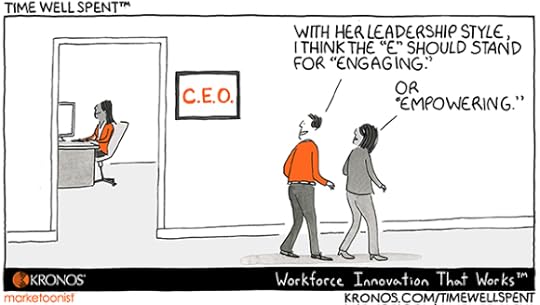
None of us have the word “leader” in our job title. We’re administrators, coordinators, managers, directors, or in the case of this Time Well Spent cartoon from our friends at Kronos – chief executive officer. But that doesn’t mean we’re not expected to be leaders.
When I looked at today’s cartoon, I really focused on the words “engaging” and “empowering” because I think we expect everyone to exhibit those qualities. Regardless of their job title. Which means that leaders are everywhere in our organizations and we need to cultivate those skills in our employees.
New hires should receive a Leadership 101 session during onboarding. As I mentioned, there are basic attributes of leadership that we expect in all employees. Organizations should let employees know that they expect people to use those attributes in their daily work interactions. A perfect way to start is with a brief Leadership 101 session, which could be conducted during onboarding or a recorded webinar for everyone to listen.
Companies might want to offer a “Principles of Leadership” program to all employees. Many organizations conduct leadership training in conjunction with management skills training. And that’s fine. But it could make sense to build off the Leadership 101 session with a longer program focused on helping employees at every level refine their skills in leading. Even if they don’t plan to become a manager.
Make a distinction between leadership and management functions. Speaking of managers, I totally believe that managers need to have leadership skills. But sometimes talking about leadership during management skills training can be confusing. I think organizations should start drawing distinctions between the two. That way, when companies are talking about leadership, managers realize that their employees need to be developed in these areas as well.
As the cartoon mentions, it’s important for CEOs to have leadership skills. But it’s equally important for all employees. Because when leadership is cultivated at every level, then things like engagement and empowerment become a whole lot easier.
The post Leadership Exists at Every Level Of the Organization – Friday Distraction appeared first on hr bartender.






February 21, 2019
Employee Perks: Free Food at Work Is Nice to Have

A few weeks ago, we asked a couple of questions about free food. This time we did something a bit different. We asked for your thoughts both as an employee and on an organizational level. Because let’s face it, our views about free food could be completely different depending on what hat you’re wearing. Here are the results:
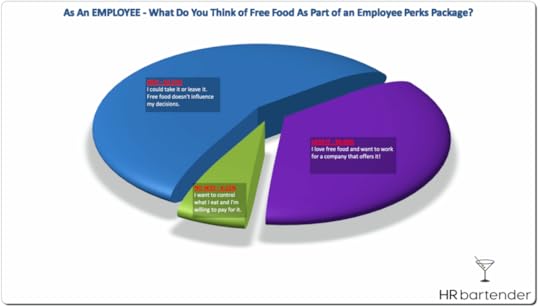
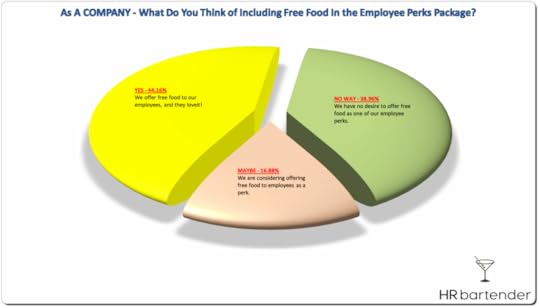
I did get some notes about this survey not being nearly detailed enough. I totally understand. My thought is that this survey wasn’t designed to be the absolute definitive word on food as a workplace perk. It was designed to start a conversation and I think it accomplished that. A few things I would suggest you explore a little deeper:
Employees like free food … when it’s done right. Not that we shouldn’t be eating nutritious good every day, but there’s an increased emphasis on being healthy. That includes eating healthy. Organizations that provide food to employees should be prepared to offer nutritious options, not simply the cheapest eats they can find.
Free food isn’t a substitute for competitive pay and good management. I didn’t interpret the responses as free snacks is a benefit that candidates talk about during their job search. Or that employees stay with a company because it offers free grub. Ultimately, employees want good pay, benefits, and managers.
Organizations need to be committed to free food. Providing free food to employees takes some effort and resources. It can be a thankless job. Companies offering free food must commit the time and budget toward making it happen. Otherwise, it could quickly move to the top of the employee complaint list.
Don’t forget the snacks! Companies that don’t plan to offer free meals to employees aren’t terrible employers. Employee snacks can be a huge workplace plus. But just like the other points above, they need to be healthy. And the organization should be committed to doing it well. A sad snack display is … well, sad.
In some industries, the idea of free food is a given. They have access and the means to providing meals. An example is the hotel industry – they buy food for guests, have kitchens and culinary teams, and a breakroom for employees to enjoy the meal. In other industries, providing free food could be more challenging because those things aren’t available.
If you’re exploring food as a perk, my suggestion would be to start a conversation like we did here. Find out if employees want free food. See if senior management will support it. Because once you start offering free food, it will be difficult to stop.
Image captured by Sharlyn Lauby after speaking at a corporate conference in Scottsdale, AZ
The post Employee Perks: Free Food at Work Is Nice to Have appeared first on hr bartender.






February 19, 2019
Onboarding: Take Your Process From Basic to Strategic
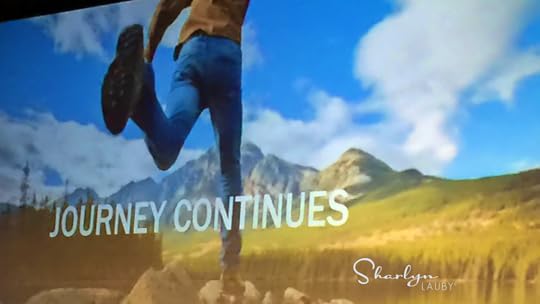
(Editor’s Note: Today’s post is brought to you by our friends at SilkRoad , a provider of strategic onboarding solutions to drive workforce readiness and organizational transformation. Check out their research, “ The Value of Employee Engagement in the Age of Digital Disruption ” a valuable report for any HR leader who wants to see engagement and onboarding from the C-suite. It’s a must-read for any human resources professional. Enjoy the article!)
Onboarding continues to be a strategic focus for organizations. According to Brandon Hall’s 2017 Onboarding Survey, over 70 percent of organizations in the U.S., EMEA, and APAC have placed increased emphasis on the process. And there’s good reason for it.
The same study indicated that companies with more mature onboarding programs experience 43 percent higher market penetration than those with less mature programs. Good onboarding benefits the bottom-line.
But sadly, the onboarding process isn’t keeping up with the times. In many organizations, onboarding is simply an extension of orientation. This isn’t to say that orientation is bad. To the contrary, it performs an important role. But onboarding is supposed to be different.
4 Onboarding Trends for 2019
Four trends were identified in SilkRoad’s 2018 Global Strategic Onboarding Reportthat organizations need to consider when it comes to onboarding new hires.
Identify the audience. When we think onboarding, most of the time we think new hires. Time for that to change. Whenever there’s an employee status change, the organization needs to ask themselves, “Would an employee benefit from onboarding?” This includes promotions, demotions, and lateral transfers. It also includes mergers and acquisitions.Shift the goal. For years, the primary goal of onboarding has been job readiness. And while that’s still important, organizations are acknowledging that employee engagement might be a more strategic primary goal. Eighty percent (80%) of companies in North America indicated that engagement and retention take precedent over readiness. Build content to support the goal. I don’t know of a single organization that has a training program on how to conduct onboarding. We do for performance management and interviewing, but not onboarding. Maybe it’s time to start. Building out content for onboarding is ranked as the number one investment that organizations are making. Let content determine length. SilkRoad’s report shows the majority of onboarding programs last three months or less. Honestly, that’s simply not long enough. Before deciding how long onboarding will last, look at how much content needs to be covered. Then decide. And remember…there’s no rule that says onboarding can’t be spread out over several months.
The ideal time to have this discussion is at the beginning of the operational year or budget year. Everyone is focused on goals – including talent management goals. After the organization has considered their options, it’s time to put a plan in place.
How to Create Your Strategic Initiative
Creating a strategic onboarding plan doesn’t have to be complex or expensive. It doesneed to be thorough. Here are six steps to get the process started:
Add a readiness component. I’ve always said the goal of onboarding is to make employees welcome and productive. And I still believe that’s true. But as more organizations add artificial intelligence technologies, it’s time to add a third component: ready. Not just ready for the job the employee has today, but ready to take on new opportunities in the future. This might include reskilling and upskilling.
Get buy-in. No company initiative works without buy-in. It’s possible that the organization will start buying-in during the discussion about trends (above). But it might also take some extra support, especially if additional resources are necessary. Consider getting the buy-in of your “harshest critic”. If you can convince them this project is necessary, chances are you will get the support you need.

Conduct an internal assessment. Even if you already know what you have, conduct an assessment. Even if you know what you want, conduct an assessment. It doesn’t have to be a long assessment. But it should happen. Assessments confirm that our assumptions are correct. There’s nothing worse than designing a program to solve a problem only to discover that the program doesn’t solve the problem at all. Trust me, it happens a lot.
Identify opportunities. The results of the assessment should provide some targets for improvement. The key here is prioritizing opportunities. Taking onboarding from basic to strategic isn’t about going 100+ mph. It’s about adding layers that will complement each other. It’s about smart implementation. HR departments need to be careful that they don’t take on too much and end up delivering lackluster results. It doesn’t help the goal.
Build a SMART plan to address gaps. You guys know I’m a big fan of SMART (specific, measurable, actionable, responsible, time-bound). This is a perfect way to use it. Identify the first opportunity you want to work on. Decide what success will look like. Break down the individual steps it will take to accomplish the goal along with who will be responsible for each. Finally, attach a reasonable timeline to the project.
Monitor progress. Once the project is launched, it’s essential to regularly monitor status toward goals. Even though a plan has been put in place, there could be internal or external influences that necessitate making adjustments. Just keep in mind that adjustments are common and can ultimately help in creating a better program. So, plan to review progress on a pre-determined schedule. Even if you think that there’s nothing new to report.
Strategic Onboarding Creates a Competitive Advantage
The outplacement and executive coaching firm Challenger, Gray, and Christmas predicts that hiring in 2019 will be up over the past year. That means more talent acquisition challenges. And more onboarding.
If organizations want to engage and retain the employees and they’re spending huge resources to hire, they’re going to have to do something different. Part of that difference is strategic onboarding.
P.S. If you want to learn more about strategic onboarding, schedule a demo to preview SilkRoad’s strategic onboarding solution. Technology will continue to be a key consideration in the transformation from basic to strategic onboarding.
Image captured by Sharlyn Lauby at the SilkRoad Connections Conference
The post Onboarding: Take Your Process From Basic to Strategic appeared first on hr bartender.






February 17, 2019
How to Get Better Results In Your Work
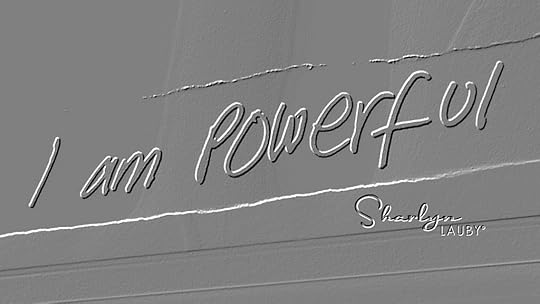
It’s a given that organizations want employees to perform at a high-level. But what about employees? I know there are some who might think otherwise, but overall, I’d like to believe that employees want to perform well too. No one wants to have a reputation for being a slacker or not doing a good job. Most people want to be known for delivering results.
But delivering results doesn’t just happen. We have to work at it. Here are seven things that can help us achieve better results in our work:
Set aggressive but achievable goals. I like to think of goals as “the object of a person’s effort”. This means that goals are an important part of results. Goals don’t have to be big, but they do need to be challenging. Our goals should push us a little bit. That “push” could be in terms of work quality, work quantity, or how fast we get the work done.Look for supporters. At every level of the organization. Once we know our goals, we need to find people who will support us – both in terms of providing resources and motivational support. Obviously, we want our boss to support us. Other individuals that might support and guide us include our co-workers and possibly even our vendor partners.Get organized. If you’ve ever been distracted by pictures of cute lemurs on the internet, then you know we can spend a lot of time, energy, and resources on the wrong things. If we want to deliver excellent work, then we need to use our resources wisely. Employees should have a plan and a reasonable timeline for completing their work.Allocate resources. Speaking of resources, employees need to ask themselves, “What resources do I have? What additional resources can I get?” This also ties back to #2 in looking for supporters. Is it possible that you’ll need to ask a supporter to share resources? This could also link with #1 in terms of accomplishing a goal with limited resources. Use technology strategically. One of the resources that can help us achieve better results is technology. However, for technology to be highly effective, employees need to know what technology they have access to and how that technology works. Sometimes organizations aren’t using technology to its fullest capabilities and that has an impact on results. Monitor progress regularly. Once we start work, we need to monitor results. If we’re working on a big project, there could be defined milestones with identifiable times to monitor progress. When it comes to our everyday work, we could take ten minutes at the end of our day to simply review what we’ve done toward accomplishing our goals. Small steps can quickly turn into big results.Celebrate success. I think sometimes we sell ourselves short by not celebrating what we’ve done. We put it into the category of “we did our job” so that’s not worth celebration. Let me offer one way to view this: if you’re setting challenging goals, collaborating with others, staying organized by using resources wisely, levering technology, and regularly reviewing your progress…then even if you’re “doing your job”, it’s worth celebration. Because it’s hard work.
Doing our best work isn’t always easy. Maintaining high performance isn’t easy either. But there are a few things we can do to maintain high performance and achieve our professional goals.
Image captured by Sharlyn Lauby after speaking at the SHRM Annual Conference in Washington, DC
The post How to Get Better Results In Your Work appeared first on hr bartender.






Sharlyn J. Lauby's Blog
- Sharlyn J. Lauby's profile
- 10 followers



